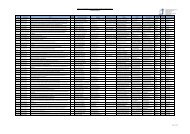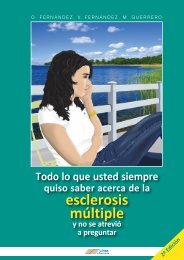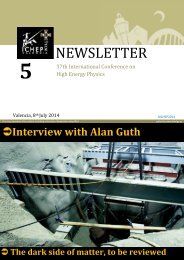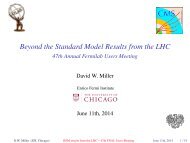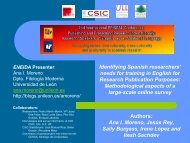PW_mar13_sample_issue
PW_mar13_sample_issue
PW_mar13_sample_issue
You also want an ePaper? Increase the reach of your titles
YUMPU automatically turns print PDFs into web optimized ePapers that Google loves.
physicsworld.com<br />
Towards global quantum communication<br />
QKD at time t 1<br />
A<br />
Earth<br />
Global communication, such as fibre-optic broadband, could<br />
be made more robust by establishing a secure encryption<br />
key between two communicators that no-one else could<br />
possibly know. This could be done by using a satellite<br />
enabled with quantum technologies to act as a kind of relay<br />
between two ground stations to establish a secure key.<br />
One way of doing this would be a “trusted QKD node” approach<br />
(left), in which an orbiting satellite first establishes a key –<br />
key 1 – with station A via quantum key distribution (QKD),<br />
sending single photons one at a time either by uplink (from<br />
ground to satellite) or downlink (from satellite to ground). The<br />
satellite travels some Adistance and then B establishes another,<br />
different, key – key 2 – with station B. (QKD itself cannot<br />
transmit existing keys, but only generate new ones.) The<br />
satellite then encodes key 1 with key 2 (encrypting it) and<br />
transmits the result over radio communications to ground<br />
station B, which uses the key Earth it knows (key 2) to determine<br />
key 1. At this point both ground stations possess a shared<br />
secure key – key 1 – which enables them to communicate<br />
securely on the ground via the usual classical means.<br />
This approach comes with a caveat, however: the satellite<br />
knows the secure key that the ground stations will use. If a<br />
nefarious entity were to somehow penetrate the security of<br />
the satellite, which would be no small feat given a properly<br />
designed autonomous orbiter, then the security of the<br />
communication on the ground would be vulnerable. One has<br />
tems (including the moving observers scenario above).<br />
Moreover, long-distance “quantum teleportation”<br />
experiments could be conducted – the first baby steps<br />
towards realizing the famous Star Trek “Beam me up,<br />
Scotty” command may be only a few years away.<br />
Meanwhile, back on Earth...<br />
For these experiments to be conducted any time soon,<br />
an actual design for a satellite must be nailed down<br />
and, of course, built. As for anything of a space-faring<br />
pedigree, this encompasses a number of technical<br />
challenges that need to be resolved. First and foremost<br />
is figuring out how to successfully transmit the<br />
quantum optical signal between the satellite and the<br />
ground station, which has been studied in increasing<br />
detail by various groups worldwide. The problem<br />
B<br />
QKD at time t 2<br />
Quantum frontiers: Communication in space<br />
to trust that the satellite is secure.<br />
Fortunately, it is possible to utilize a different approach<br />
such that the satellite can act as an “untrusted node” (right).<br />
Here, an orbiting satellite generates entangled photon<br />
pairs and transmits one photon of the pair to each of the<br />
ground stations A and B simultaneously. The entanglement<br />
correlations between the photon pairs allow A and B to<br />
extract a common secret key that even the satellite does<br />
not know. The ground stations could then compare their<br />
detection statistics, independent of the source, in a manner<br />
similar to a Bell test (see box opposite), allowing them to<br />
verify that no other party gained information about the<br />
states they received – not even the satellite. (Another<br />
proposal reverses this idea, with each ground station<br />
generating and transmitting single photons that are received<br />
and entangled by the satellite, although this is considerably<br />
more technically challenging.)<br />
Verification of the trustworthiness of the source means<br />
that no assumptions have to be made about the security of<br />
the satellite, but it does mean that the satellite needs much<br />
more complex kit, including an entangled photon source and<br />
two telescopes that can be pointed independently. These<br />
extra complications make the trusted node, by comparison,<br />
seem like a good stepping stone for testing quantum<br />
encryption with a satellite, moving towards an untrusted<br />
node approach as a long-term solution.<br />
that needs to be overcome is atmospheric loss – not<br />
in space, but in the region near the ground station.<br />
Other effects to contend with include atmospheric<br />
turbulence, diffraction and background noise. Our<br />
own group at the Institute for Quantum Computing<br />
(IQC) in Waterloo, Canada, has recently concluded<br />
a comprehensive theoretical study, simultaneously<br />
incorporating all of the significant effects on the signal<br />
throughput, which has helped us to determine what<br />
overall design features of the satellite and ground station<br />
systems would be suitable. We also calculated the<br />
expected performance of the quantum optical signal<br />
for QKD and fundamental science endeavours.<br />
Another important technical challenge is to ensure<br />
that the quantum channel between the satellite and<br />
the ground station is precisely aligned as we need<br />
Physics World March 2013 55<br />
A<br />
Earth<br />
Earth<br />
B<br />
QKD<br />
A B<br />
The puzzling<br />
question is<br />
at what point<br />
the outcome<br />
is determined,<br />
when the<br />
time-order of<br />
measurement<br />
events<br />
depends on<br />
which observer<br />
asks the<br />
question



